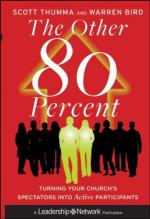For my own Part, I am apt to join in Opinion with those who believe that all the Regions of Nature swarm with Spirits; and that we have Multitudes of Spectators on all our Actions, when we think our selves most alone: But instead of terrifying my self with such a Notion, I am wonderfully pleased to think that I am always engaged with such an innumerable Society in searching out the Wonders of the Creation, and joining in the same Consort of Praise and Adoration.
Milton [2] has finely described this mixed Communion of Men and Spirits in Paradise; and had doubtless his Eye upon a Verse in old Hesiod, [3] which is almost Word for Word the same with his third Line in the following Passage.
’Nor think, though Men were none,
That Heav’n would want Spectators,
God want praise:
Millions of spiritual Creatures walk the
Earth
Unseen, both when we wake and when we
sleep;
All these with ceaseless Praise his Works
behold
Both Day and Night. How often from
the Steep
Of echoing Hill or Thicket, have we heard
Celestial Voices to the midnight Air,
Sole, or responsive each to others Note,
Singing their great Creator: Oft
in bands,
While they keep Watch, or nightly Rounding
walk,
With heav’nly Touch of instrumental
Sounds,
In full harmonick Number join’d,
their Songs
Divide the Night, and lift our Thoughts
to Heav’n.’
C.
[Footnote 1: who]
[Footnote 2: ‘Paradise Lost’, B. IV., lines 675-688.]
[Footnote 3: In Bk. I. of the ‘Works and Days,’ description of the Golden Age, when the good after death
Yet still held state on earth, and guardians
were
Of all best mortals still surviving there,
Observ’d works just and unjust,
clad in air,
And gliding undiscovered everywhere.
’Chapman’s Translation’.]
* * * * *
No. 13. Thursday, March 15, 1711. Addison.
‘Dic mi hi si fueris tu leo qualis eris?’
Mart.
There is nothing that of late Years has afforded Matter of greater Amusement to the Town than Signior Nicolini’s Combat with a Lion in the Hay-Market [1] which has been very often exhibited to the general Satisfaction of most of the Nobility and Gentry in the Kingdom of Great Britain. Upon the first Rumour of this intended Combat, it was confidently affirmed, and is still believed by many in both Galleries, that there would be a tame Lion sent from the Tower every Opera Night, in order to be killed by Hydaspes; this Report, tho’ altogether groundless, so universally prevailed in the upper Regions of the Play-House, that some of the most refined Politicians in those Parts of the Audience, gave it out in Whisper, that the Lion was a Cousin-German of the Tyger who made his Appearance in King William’s




